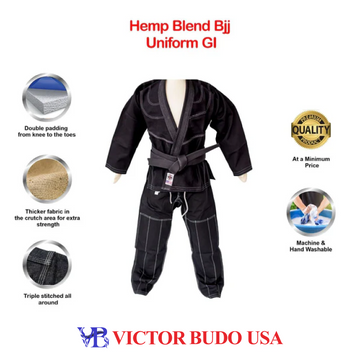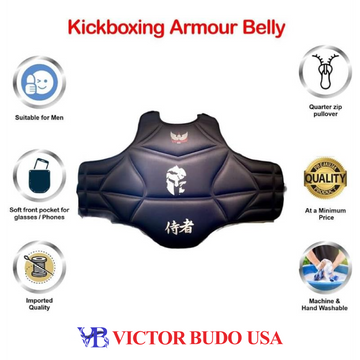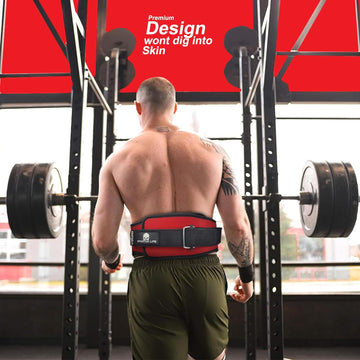If you’ve ever been in a gym, you’ve probably seen someone wearing a weightlifting belt while lifting heavy weights. But you might be wondering, do I need one? Or is it just for the super serious lifters? Well, you’re not alone in asking this question. Many people aren’t sure when or if they should use a weight lifting belts.
In this post, we’ll break it down for you. We’ll explain why weightlifting belts can be helpful when you should wear one, and when you probably don’t need it. By the end, you’ll know exactly how to make the best decision for your lifting routine. So, let’s dive in.
What Exactly is a Weightlifting Belt?
A weightlifting belt is a thick piece of gear that you wear around your waist when you lift heavy weights. It’s usually made from either leather or nylon, and it helps support your core and lower back. When you wear it, it makes it easier to tighten your core muscles, which helps protect your back while lifting. The main idea is that the belt can help prevent injuries, especially when lifting heavy weights like deadlifts, squats, or overhead presses.
If you’re looking for a great option, Victor Budo USA makes top-quality lifting belt for women that provide excellent support and comfort for beginners and seasoned lifters. Whether you’re just getting started or looking to upgrade your gear, Victor Budo USA belts are a solid choice.
Why Should You Use a Weightlifting Belt?
Let’s look at why you might want to wear a weightlifting belt during your workouts.
1. Better Support for Your Back
One of the main reasons people wear a lifting belt is to protect their back. When you’re lifting heavy weights, it can put a lot of pressure on your spine. The belt helps keep everything in place, reducing the chances of straining or injuring your back. It acts like extra protection during tough lifts.
2. Helps You Lift More Weight
You may find that you can lift more when wearing a belt. Why? Well, the belt helps you create more pressure in your abdomen, giving you extra strength and stability during your lift. So, if you’re trying to set a personal record (PR), a weightlifting belt can help you push past your limits safely.
3. Less Risk of Injury
The main job of the weightlifting belt is to keep your spine protected during heavy lifts. If you’ve had back problems before or you’re worried about hurting yourself, the belt can offer extra support and peace of mind. It won’t replace good form, but it lowers your risk of injury.
4. Better Posture and Form
A weightlifting belt also helps you maintain better posture when you’re lifting. It keeps your back and core engaged, which makes it easier to stay straight and stable during exercises like deadlifts and squats. Good posture is key to lifting safely and efficiently.
When Should You Wear a Weightlifting Belt?
So, now that you know why people wear Genuine Leather Weight Lifting Belt, let’s talk about when you should put one on.
1. When Lifting Heavy Weights
The most common time to wear a lifting belt is when lifting heavy weights. This includes exercises like squats, deadlifts, and overhead presses. These moves put a lot of strain on your back, and a weightlifting belt helps keep everything secure.
2. When You’re Trying to Set a Personal Record (PR)
If you’re working towards a personal record (PR)—meaning you’re lifting more than you ever have before—a weightlifting belt can help you reach your goal. It provides support and stability, so you’re less likely to hurt yourself while trying to lift heavy.
3. If You Have Past Back Injuries
If you’ve had a back injury, wearing a weightlifting belt can help protect your spine while lifting. Many people with back problems wear a belt because it provides extra support, especially during heavy lifts.
4. For Strength Training or Powerlifting
If you’re serious about strength training or competing in powerlifting, you’ll most likely wear a weightlifting belt regularly. These athletes lift heavy weights as part of their training, so having a belt helps them stay safe and perform at their best.
When Should You Skip the Weightlifting Belt?
Even though weightlifting belts can be super helpful, there are times when you probably don’t need one. Here’s when you can leave the belt off.
1. If You’re Just Starting Out
If you’re new to lifting weights, you probably don’t need a belt immediately. Initially, it’s important to focus on getting your form right and building your core strength. Using a belt too early could prevent you from developing good habits and using your core muscles properly. So, start without the belt and build up your strength first.
2. When Lifting Lighter Weights
You don’t need a weightlifting belt for lighter lifts. If you’re doing exercises that don’t challenge your back too much, there’s no need to wear a belt. Focus on using good form and engaging your core instead.
3. For Exercises That Aren’t Heavy Lifting
Exercises like bicep curls, lunges, or even push-ups don’t put much strain on your back, so you don’t need a weightlifting belt. Wearing one for these exercises can be uncomfortable and limit your range of motion, so just skip it.
4. If You Rely Too Much on the Belt
It’s easy to get too comfortable with a lifting belt, but don’t depend on it too much. Your core muscles need to get stronger, and wearing a belt all the time might stop you from developing that strength. Ensure you’re still working to train your core so you don’t need the belt for every lift.
How to Choose the Right Weightlifting Belt
If you’ve decided that a lifting belt is the right choice for you, here’s how to pick the best one.
1. Leather vs. Nylon
Leather belts are stiff and provide great support, making them a good choice for heavy lifters. Nylon belts are softer and more flexible, making them more comfortable for beginners or people who lift lighter weights.
Victor Budo USA has a range of high-quality leather and nylon belts that fit different lifting needs. Their belts are made for durability and comfort, so they’re great for both beginners and experienced lifters.
2. Width and Thickness
Most weightlifting belts are about 4 inches wide, but you can find different sizes depending on your preferences. The thickness of the belt also affects how much support it gives, so pick one that feels comfortable to you and suits your lifting style.
3. Fit and Comfort
A belt should fit snugly around your waist but not so tight that it cuts off your circulation. Most belts come with adjustable buckles or Velcro straps to get the perfect fit.
4. Price
Weightlifting belts vary in price, from budget-friendly options to premium brands. You don’t have to spend much money, but it’s worth investing in a solid belt that offers the support you need.
Alternatives to Using a Weightlifting Belt
While weightlifting belts are great tools, other ways exist to stay safe and improve your lifting form. Here are some alternatives:
1. Strengthen Your Core
A strong core is essential for safe lifting. Exercises like planks, leg raises, and ab rollouts can help you build core strength, so you don’t always rely on a belt for support.
2. Focus on Proper Technique
Proper form should always come first. If your technique is off, no amount of equipment will protect you from injury. Focus on learning and practicing the right form for every lift.
3. Other Gear for Support
Other items like knee sleeves, wrist wraps, and lifting straps can help with different types of lifts. These items can make your lifts more comfortable, but they serve other purposes than a belt.
Conclusion
So, do you need a weightlifting belt? It depends on your goals and lifting experience. If you’re lifting heavy weights, trying to set a personal record, or dealing with back pain, a weightlifting belt can help keep you safe and lift more effectively. But if you’re just starting or lifting lighter weights, it might not be necessary.
The key is to use a belt to help you lift safely while focusing on building your core strength and using proper form. And remember, always prioritize technique over equipment. If you’re ready to take your lifting to the next level, try out a weightlifting belt from Victor Budo USA and see how it helps you improve your lifts.



